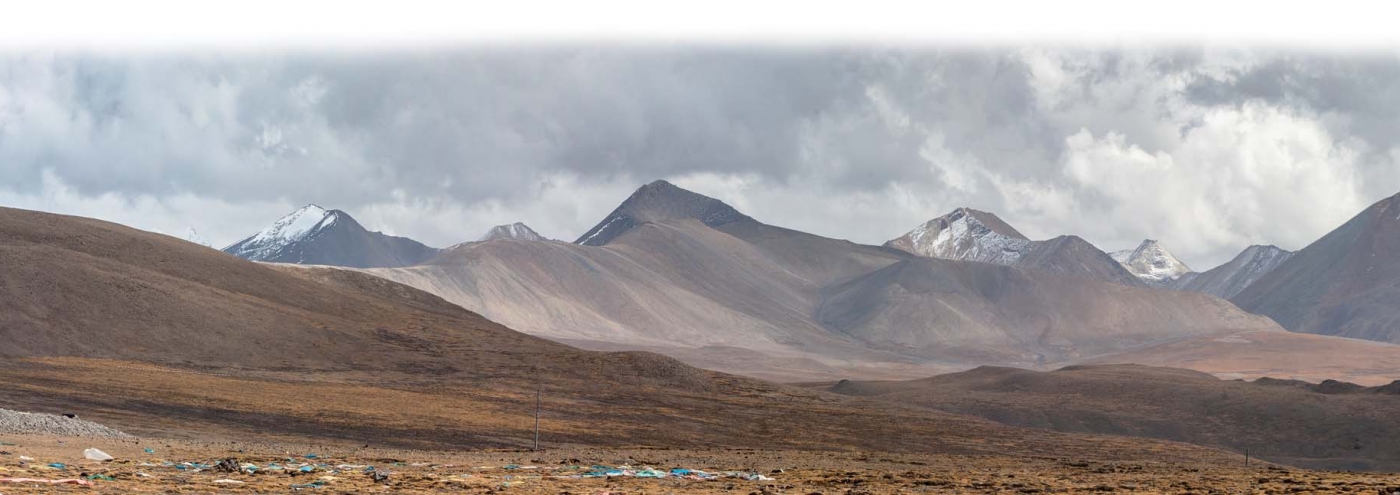1 november 2012
Het fundament van China
Dit artikel is verschenen in: geografie november/december 2012
Kennis

FOTO: JAY MOOY
China kent een lange en ingewikkelde geologische geschiedenis. Landschappen kunnen zelfs op korte afstand sterk variëren. Bepalend voor de basale verschillen is de platentektoniek vanaf de oudste geologische perioden tot in de recente tijd.
Het artikel ‘Het Fundament van China’ is gebaseerd op een aantal originele publicaties.
Het gedeelte over de vroege uitbouw van China is gebaseerd op de publicaties van:
- Charvet, J. Shu, L. Shi, Y. Guo, L. and Faure, M. (1996): The building of South China collision of Yangzi and Cathaysia blocks, problems and tentative answers. Journal of Southeast Asian Earth Sciences. 13, 3-5; 223-235.
- Hacker, B. et al. (2004): Subduction, collision and exhumation in the ultrahigh-pressure Qinling-Dabie orogen. In: Malpas, J. Fletcher, C.J.N. Ali, J.R. Aitchison, J.C. eds (2004): Aspects of the tectonic Evolution of China. Geol. Soc. Spec. Publ. 226:157-175.
- Gov. of Hong Kong: The geology of Hong Kong.www.cedd.gv.hk/eng/about/organisation/int.htm
- Metcalfe, I. (2011): Palaeozoic-Mesozoic history of SE Asia. In: Hall, R. Cottam, M.A. & Wilson, M.E.J. (eds) (2011): The SE Asian gateway: History and Tectonics of the Australian-Asia collision. The Geological Society, London, Special Publications, 355: 7-35
- Metcalfe,I. (1998): Palaeozoic-Mesozoic geological evolution of the SE Asian region: multidisciplinary constraints and implications for biogeography. Biogeography and Geological Evolution of SE Asia, R.Hall and J.D.Holloway (eds): 25-41.
- Jahn, B.M. (2004): The Central Asian Orgogenic Belt and growth of the continental crust in the Phranerozoic. In: Malpas, J. Fletcher, C.J.N. Ali, J.R. Aitchison, J.C. eds (2004): Aspects of the tectonic Evolution of China. Geological Society, London, Special Publications, 226: 73-100.
- Liu, M.et al. (2007): Active tectonics and intracontinental eathquakes in China. The kinematics and geodynamics. The Geological Society of Amerirca, Special Papers,425:299-31
- Richardson, N.J. at all, (2008): Extraordinary denudation in the Sichuan Basin: Insights from low-temperature thermochronology adjacent to the eastern margin of the Tibetan Plateau. Journal of Geophysical Research, 113, B04409,doi:10.1029/2006JB004739.
- Wang, CH.,Zhao,X., Liu,Z.,Lippert, P.C.,Graham, S.A., Coe, R.,Yi, H.,Zhu, L., Lin,S. & Li, Y. (2008): Constraints on the early uplift history of the Tibetan Plateau. Proc. Nat. Ac. of Sciences of the USA (PNAS): 105, 13: 4987-4992.
- Yin, An & Nie, Sh. (1996): A Phranerozoic palinspastic reconstruction of China and its neighboring regions. In: Yin, An & Harrison, M. eds. (1996): The tectonic evolution of Asia. Cambridge University Press, Cambridge UK: 442-485.
- Yin, An & Harrison, T.M. (2000): Geological evolution of the Himalayan-Tibetan orogen. Annual review of earth and planetary sciences. 28: 211-280.
Over de aanhechting van het Indo China Blok aan het Zuid China Blok:
- Carter, A. & Clift, .D. (2008): Was the Indosinian orogeny a Triassic mountain building or a thermotectonic reactivation event? C.R.Geoscience, 340: 83-93
- Clift, P.D., Bluszajn J. & Nguyen Duc. (2006): Large-scale drainage capture and surface uplift in eastern Tibet-SW China before 24 Ma inferred from sediments of the Hanoi Basin, Vietnam. Geophysical Research Letters, 33, L19403, doi:10.1029/GL027772,2006
- Cung, Th.C. & Dorobek, S. (2004): Cretaceous palaeomagnetism of Indochina and surrounding regions: Cenozoic tectonic implications. In: Malpas, J. Fletcher, C.J.N. Ali, J.R. Aitchison, J.C. eds (2004): Aspects of the tectonic Evolution of China. Geol. Soc. Spec. Publ. 226: 273-287.
- Clift, P.D. Blusztajn, J. and Duc, N.A. (2006): Large-scale drainage capture and surface uplift in eastern Tibet-SW China before 24 Ma inferred from sediments of the Hanoi Basin, Vietnam. Geophysical Res. Letters, 33,L19403,doi:10.1029/2006GL027772,2006.
- Replumaz, A. et al. (2001): Large river offsets and Pio-Quarternary dextral slip rate on the Red River fault (Yunnan, China) Journ. Of Geophysical Res. 106, B1: 819-836.
- Schoenbohm, L.M., Burchfiel, B.C.& Liangzhong,C. (2006): Propagation of surface up;ift, lower crustal flow and Cenozoic tectonics of the southest margin of the Tibetan Plateau. Geology, 34,10:813-816 (doi:10.1130/G22679.1)
- Searle, M.P. (2006): Role of the Red River Shear zone, Yunnan and Vietnam, in the continental extrusion of SE.Asia. Journ of the Geol. Soc. Of London,163: 1025-1036.
Over de botsing van India met Eurazië:
- Aitchison, J.C. & Davis, A.M. (2004): Evidence for the multiphase nature of the India-Asia collision from the YarlongTsangpo suture zone, Tibet. In: Malpas, J. Fletcher, C.J.N. Ali, J.R. Aitchison, J.C. eds (2004): Aspects of the tectonic Evolution of China. Geol. Soc. Spec. Publ. 226: 217-246.
- Aitchison, J.C., Ali J.R. & Davis, A.M. (2007): When and where did India and Asia collide? Journ. Of Geoph. Res. 112 (B05423,doi:10.1029/2006JB004706,2007)
- Clark, M.K. et al. (2004): Surface uplift, tectonics and erosion of eastern Tibet from large-scale drainage pattern. Tectonics, 23, TC 1006, doi:10.1029/2002TC001402, 20 pp.
- Copeland,T. Harrison, M.,Yun, P.,Kidd, W.S.F., Roden,M.& Yuquan,Z. (1995): Thermal evolution of the Gandese batholith, southern Tibet: a history of episodic unroofing. Tectonics,14,2: 223-236.
- Chung, S.L. et al. (2005): Tibetan tectonic evolution inferred from spatial and temporal variations in post-collisional magmatism. Earth-Science Reviews, 68: 173-196.
- Liu,M. et al. (2007): Active tectonics and intercontinental earthquakes in China. The kinematics and geodynamics. The Geological Society of America, Special Papers, 425: 299-318.
- Molnar,R & Stock, J. (2009): Slowing of India’s convergence with Eurasia sinc 20 Ma and its imlpications for the Tibetan mantle dynamics. Tectonics, 28, TC3001,doi:10.1029/2008TC002271,2009.
- Mo, X. et al. (2009): Mantle input to the crust in southern Gandese, Tibet, during the Cenozoic: zircon Hf isotopic evidence.
- Jour. Of Earth Sciences, 20,2: 241-249.
- Searle, M.P. Elliot, J.R. and Phillips, R.J. et al. (2011): Crustal-lithospheric structure and continental extrusion of Tibet. Journal of the Geological Society, 168: 633-672
- Xuanxue, M et al. (2009): Mantle input to the crust in southern Gandese, Tibet, during the Cenozoic: zircon Hf Isotopic evidence. Journ. Of Earth Sciences, 20,2: 241-249. (doi:10.1007/s00000-001-0023-1)
- Wang, Ch. et al. (2008): Constraints on the early uplift history of the Tibetan Plateau. Proc. of the National Academy of Sciences, 105, 13: 4987-4992.
- Yin, A. and Harrison, M. (2000): Geologic evolution of the Himalayan-Tibetan Orogen. Annual Review Earth and Planetary Sci. 28:211-280.